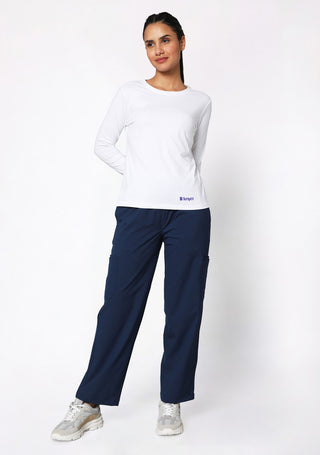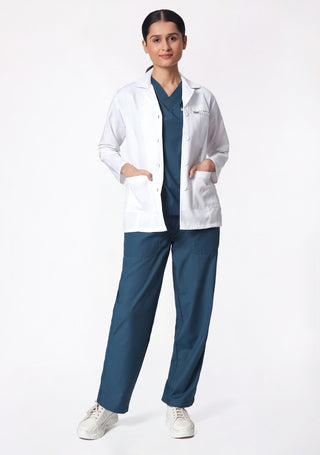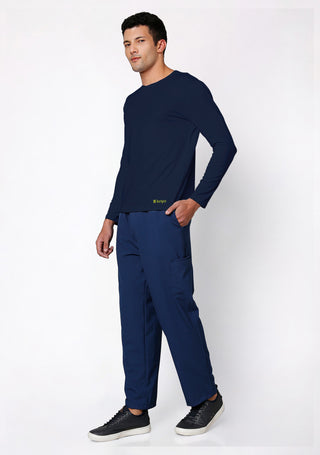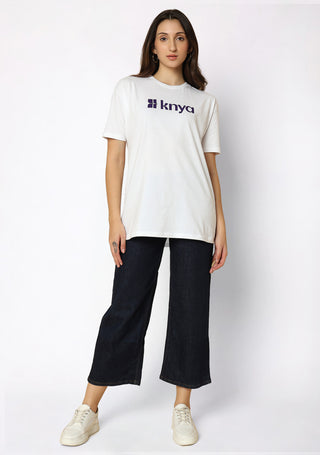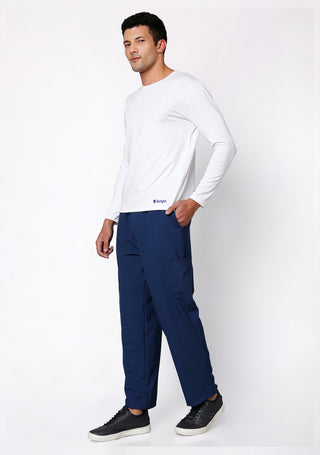Scrubs have journeyed far beyond the operating room into nearly every corner of healthcare and scientific fields. Whether it’s a veterinarian suturing a puppy’s wound, a dental hygienist cleaning a patient’s teeth, a lab technician analyzing samples, or a physical therapist helping someone walk again, scrubs are silently working in the background — offering comfort, safety, and professionalism.
Clinics and Outpatient Centers
Primary care clinics, specialty outpatient centers, and urgent care units all rely heavily on medical scrubs. In these settings, doctors, nurses, physician assistants, and medical assistants interact with dozens — if not hundreds — of patients daily. The need for easily washable, durable, and comfortable attire makes scrubs an obvious choice.
Scrubs offer a professional, unified appearance, reassuring patients of a standard of care. Their design also makes them easy to change if a spill, contamination, or unexpected mess occurs — a practical necessity when handling blood draws, minor surgical procedures, wound cleaning, and vaccinations.
Dental Clinics
The dental chair may be miles away from a hospital ward, but the need for cleanliness is just as critical. Dentists, dental hygienists, and dental assistants commonly wear scrubs to maintain hygiene and project professionalism. Procedures like root canals, cleanings, extractions, and cosmetic dentistry all involve direct contact with patients' saliva and blood, making barrier clothing essential.
Modern dental scrubs often feature bright colors or fun prints, especially in pediatric practices, helping put younger patients at ease during what could otherwise be a nerve-wracking experience.
For our male healthcare professionals, we offer a wide range of comfortable and stylish scrubs for men, designed to enhance both comfort and professional image
Research Laboratories
In medical and pharmaceutical research labs, where scientists work with biological samples, chemical reagents, or experimental treatments, scrubs serve both a practical and protective purpose.
Lab personnel must maintain sterile environments and protect themselves from potential contamination. Scrubs are easy to sanitize at high temperatures, reducing the risk of cross-contamination between different projects or experiments. Additionally, many research facilities have protocols where employees must change into lab-issued scrubs to prevent outside pollutants from entering clean rooms or sterile research areas.
Veterinary Clinics and Animal Hospitals
Animals may not judge your fashion sense, but in a veterinary setting, scrubs are absolutely vital. Veterinarians, vet techs, and support staff often wear scrubs designed for maximum mobility and durability, capable of withstanding scratches, bites, and plenty of fur.
Veterinary scrubs are often adorned with animal prints or cheerful colors to help reduce anxiety in pets and their owners. Whether assisting in surgery, administering vaccines, or simply bathing a reluctant cat, veterinary staff depend on scrubs for their practicality, comfort, and easy laundering.
Nursing Homes and Assisted Living Facilities
Caring for the elderly or individuals with chronic health conditions requires not only compassion but also strict hygiene. Staff at nursing homes and assisted living centers wear scrubs to protect residents from potential infections while providing physical assistance, administering medication, or managing hygiene needs.
Scrubs also allow caregivers the flexibility to move comfortably throughout long shifts, and the uniformity can help residents with cognitive impairments easily identify who is there to assist them.
Physical Therapy and Rehabilitation Centers
At first glance, a physical therapist’s work might seem too active for traditional scrubs. But in many rehabilitation centers, therapists and assistants wear specially designed scrubs made with stretchable, breathable fabrics.
Since physical therapists often help patients with post-surgical recovery, injury rehabilitation, or chronic pain management, scrubs allow freedom of movement while maintaining a professional appearance. They’re also easy to clean after sessions that might involve close physical contact or the use of therapeutic gels and lotions.
Home Healthcare Services
Home healthcare is a rapidly growing sector, with nurses, aides, and therapists providing in-home medical services. Scrubs are an essential part of their gear — not just for practicality, but also for professionalism.
When healthcare workers enter a home, wearing scrubs immediately establishes their role and helps build trust. It assures patients and families that the person providing care is a trained professional. Additionally, the functionality of scrubs — with ample pockets for medical tools, gloves, and notes — is incredibly helpful for home visits where equipment is limited.
Blood Donation Centers
Whether it’s a large national organization like the Red Cross or a local blood bank, staff members at blood donation centers often wear scrubs. Phlebotomists — the specialists trained to draw blood — need easy-to-clean clothing for their work, which involves direct exposure to blood.
Scrubs allow for quick changes if contamination occurs, and their professional appearance reassures donors who might be nervous about the blood donation process. In many cases, scrubs are color-coded to help visitors easily identify staff members.
Medical Spas and Aesthetic Clinics
The line between medicine and beauty is increasingly blurred at modern medical spas and aesthetic clinics. Services like Botox injections, laser treatments, microneedling, and chemical peels are often performed in clinical settings that require sterile practices.
Here too, practitioners — whether nurses, doctors, or trained technicians — commonly wear scrubs. The emphasis on a clean, professional, yet welcoming appearance is key in an environment where clients seek both safety and relaxation.
Mortuaries and Medical Examiners’ Offices
Perhaps one of the least considered yet critically important settings for scrubs is in morgues and medical examiner offices. Pathologists, forensic technicians, and mortuary attendants wear scrubs during autopsies, postmortem examinations, and body preparations.
These tasks involve exposure to biological hazards, making the ability to sterilize or dispose of contaminated clothing a must. Scrubs provide necessary protection while allowing freedom of movement during often physically demanding procedures.
We believe you deserve the best. Shop our amazing selection of lab coats right here.
Why Scrubs Remain the Gold Standard?
The widespread adoption of scrubs across so many industries isn't just about tradition — it’s about function. Here’s why scrubs continue to reign supreme in healthcare and adjacent fields:
-
Hygiene: Scrubs are easy to clean, sterilize, and replace, minimizing infection risks.
-
Comfort: Designed for long shifts and heavy-duty work, scrubs prioritize comfort and mobility.
-
Professionalism: Uniforms establish authority and inspire trust in patients, clients, and families.
-
Practicality: Multiple pockets and durable fabrics meet the everyday demands of medical and health professions.
-
Cost-effectiveness: Scrubs are relatively inexpensive compared to other professional attire and are easy to replace.
Modern scrubs have also evolved to blend style and function. With choices in fit, fabric, color, and design, healthcare professionals can express personality while adhering to professional standards. Innovations like antimicrobial fabrics, moisture-wicking technology, and four-way stretch materials continue to redefine what scrubs can offer.




